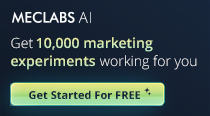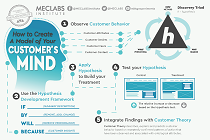December 01, 2003
How To
SUMMARY:
Here's a neat idea to test: in addition to offering complimentary shipping, try upgrading shipping speed *without* letting buyers know you are doing it. Zappos' marketers suspected that if shoppers got far better service than promised or expected, they'd return to buy again. Boy did it work.
Find out what other tactics Zappos has tested to double in size this year. (Oh, and yes, they are profitable.)
|
|
Any website selling shoes faces two related challenges - how to overcome people's obvious inhibitions about buying footwear online ("will they fit?"), and how to match the service and instant gratification provided by an offline shoe store.
The answer, according to Zappo's Chairman Nick Swinmurn, is to focus on the customer experience - offer great selection, overcome purchase objections, and then "wow" them with service.
But how does that work in practice?
#1 Make the most of the online advantage
Having a larger product selection is an obvious online advantage. But not so easy to implement in an industry with no middlemen - retailers have to source directly from brand manufacturers.
Zappos built initial product inventory using a drop shipping model, but quickly realized that some manufacturer inventory systems weren't totally accurate. Late deliveries or rejected orders left Zappos to take the resultant customer service flak.
Now the company fulfills all orders itself, through its own warehouse stocking 10,000+ styles from 175 brands.
#2 Overcome the objections to buying
Swinmurn knows that the product selection helps bring people to the door, but getting conversions means overcoming the inevitable objections to buying shoes online. Two key tactics his team uses are:
-- Complimentary return shipping
Zappos offers complimentary standard 4-5 day outbound shipping but also (and more importantly) a 365-day-from-purchase return policy which includes complimentary return shipping.
Swinmurn's aim is to make the returns process as convenient and painless as possible, because for the customer, "there's a lot less risk involved if you know that if this doesn't fit, you can send it right back free of charge and get another pair sent straight back."
Customers simply log into their Zappos.com account and print out all the required documentation - including a UPS or USPS shipping label - and can get a full refund or request an exchange.
Swinmurn notes that about 20-25% of orders are returned on average, with a "good percentage" of those returns being exchanges.
The return day limit initially stood at 30 days, and Zappos have pushed that back continually, but *without* seeing an upsurge in returns as a result. "It's just about peace of mind - subconsciously there's no rush, no pressure on them to make a decision. -- wide use of product images
Rather than relying on manufacturer's images, Zappos use two in- house professional photo studios to take pictures of each shoe style they offer. Each product page at the site then lets customers view:
* small and enlarged images of the shoe * how the shoe looks from up to eight different angles * how the shoe looks in any available color (again in each of the different angles)
Swinmurn says this approach is so customers, "...can get a feel for what it looks like on their foot - when they look down on it, sideways etc."
#3 Wow them with service
Swinmurn says, "The service is really what's allowed us to grow and keep customers coming back." Here some examples of how that manifests itself...
-- Speedier shipping upgrades at no charge
Zappos upgrades most orders automatically from four-to-five day ground to two-day air, at no charge to the customer.
"That generates a lot of buzz. We get a lot of customers calling, saying 'Wow! Thanks so much for upgrading my order proactively, I didn't expect this. I'll go tell all my friends...all my coworkers...I'll go tell my family."
Swinmurn sees the costs incurred by complimentary shipping and upgrades as a marketing cost, which pays for itself through better conversions and customer referrals.
In fact, the whole customer service/experience focus is based on the idea of driving business through word of mouth. Which allows customer acquisition resources to reinvest in that service and experience.
-- Brand-specific Email alerts
One example: "You can sign up for the Doc Martens email list. Every time we get a new style or new quantities of Doc Martens into the warehouse, you'll get an email telling you." (We imagine sign-up data is also handy from a market research and sales forecasting point of view.)
Customers looking for a specific shoe/size combination currently not stocked can also get an email alert once the shoe becomes available again.
-- The Shoe Digest
Zappos hosts a daily email discussion list for consumers, covering shoe-related topics. It's managed by an outside moderator who has full editorial independence, though there is very low-key Zappos branding in the emails. So yes, list members (there are more than 32,000 currently) can talk openly about other shoe merchants.
Doesn't Swinmurn worry that he sometimes pays for people to plug competitors?
He says no..."Customers know there are competitors out there. So for us to censor it or not facilitate discussion out of fear of customers knowing about a competitor...we just kind of realize it would happen anyway."
Interestingly, Zappos' employees are not encouraged to post on the list. "If every time someone posted something about shoes and all of a sudden they got a response that said, 'go straight to Zappos and get these right here', the whole integrity of the list would be ruined."
-- Referrals to competitors
If a customer calls customer service looking for a particular shoe and it's not available at Zappos, the reps are trained to direct them to other places online where they can buy that shoe.
Swinmurn explains, "In the long run, it's still building up the value of the Zappos brand. They don't just see us as someone who didn't have something, but as someone who provided them with a service. So we stay more firmly in their minds when it comes time for them to look for shoes again."
-- Active monitoring of feedback
All customer feedback, unsolicited or otherwise, gets reviewed and responded to by a customer loyalty team.
"Really we're a WOW-driven company, so the customers are really building the business for us. Not only by telling their friends, but by telling us how to keep making it better."
As well as typical performance metrics such as % returns, Zappos also measures success by the number of letters and emails from customers that contain the word "wow."
Any such incoming messages are sent to an internal mailing list and distributed to employees. "It sounds kind of whacky, but we think it's a really good way to measure how we're doing...it really kinds of reminds everyone why we're here, reading it each day."
-> Results
Have these tactics worked? Yep.
Revenues in 2000 were $1.8 million. By 2002 they'd reached $32 million and Swinmurn estimates a 2003 figure of $65-70 million. Zappos.com has been profitable since Q4, 2002.
Note: Zappos is a member of Shop.org, a forum for retailing online executives to share information, lessons- learned, new perspectives, insights and intelligence. More info at http://www.shop.org









